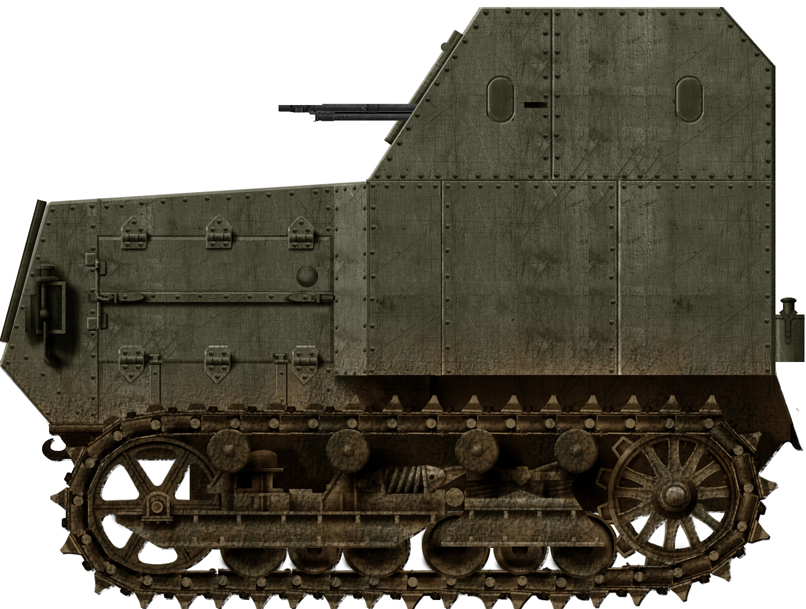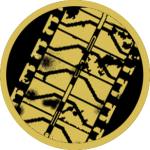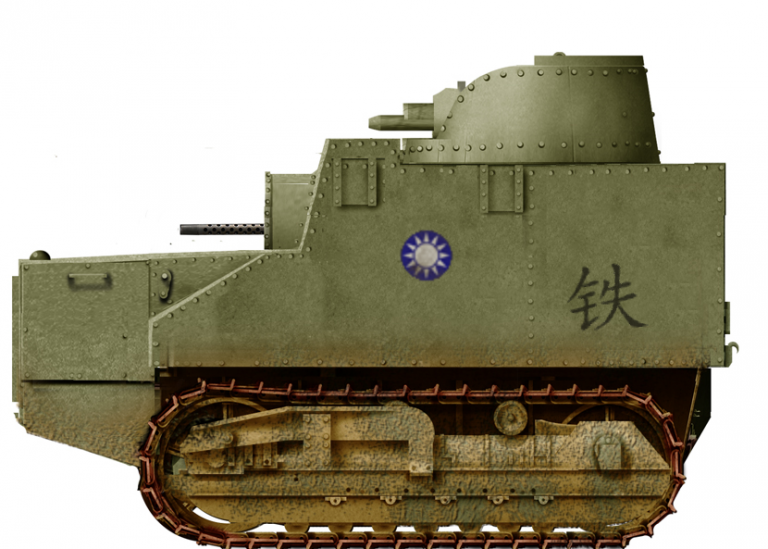Space for hull crew hatches???
You are using an out of date browser. It may not display this or other websites correctly.
You should upgrade or use an alternative browser.
You should upgrade or use an alternative browser.
Alternative History Armoured Fighting Vehicles Part 3
- Thread starter Claymore
- Start date
- Status
- Not open for further replies.
I meant to place one on the driver's side like on the T-34 but apparently I forgot.Space for hull crew hatches???
Space for hull crew hatches???
I meant to place one on the driver's side like on the T-34 but apparently I forgot.
I tried adding a hatch door to the front of the hull but it just didn't look right, so instead I stretched the hull adding a bit of space between the roadwheels.
There's now a hatch on the roof hull.
That's much better!View attachment 821518
I tried adding a hatch door to the front of the hull but it just didn't look right, so instead I stretched the hull adding a bit of space between the roadwheels.
There's now a hatch on the roof hull.
Seen Pz 3/4 with same issue.
Question, is hull narrow enough for spring suspension?
Yeah I think so but I'm no expert but after looking at other tanks and other alternate designs, I think yes.That's much better!
Seen Pz 3/4 with same issue.
Question, is hull narrow enough for spring suspension?
ISOT Hybrid AFV's of the early 1940's Italy

Top left, Semovente da.75 L/43 tank destroyer. an M14/41 converted into a TD and armed with 75 L34 cannon from the Caro Armato P.40 but with the addition a muzzle brake copied from a cold war era tank.
Top right, Italian Hetzer a P.40 converted into a TD armed with an experimental version of the German 75mm L/46 with muzzle brake and fume extractor.
Bottom left, AB.44 Lince (Lynx) an upgraded Autobilinda AB.41 with an extra rear axle and a stretched turret from an M13/40 armed with the 5cm KwK.39 cannon.
The AB.44 was inspired by Germany's Sd.Kfz.234.
Bottom right P-44 Saharino, a late war Italian heavy tank design but using a suspension based on the one from the Leo-I, armed with a 90mm gun derived from the Da.90/53 with a fume extractor and muzzle brake
ITTL the Italians not only received Italian AFV's from the future but also German made Leopard1's ( used by Italy for several decades as their standard MBT.*
*I discussed with pattontank12 whether Italy and Japan received cold war era tanks that were used by said countries but were built in the USA as many tanks used by the former Axis powers post WWII were surplus WWII US AFV's, we came to no real conclusion but since Germany and Italy were allies in WWII and both used Leo-I's post war I decided it was OK for Italy to get some Leos.
I also have the Italians here work with the Germans to design a fume extractor (inspired by the Leos) for their tanks and the Italians also decided to ad muzzle brakes to their gun barrels and it's just a coincident that it looks like the ones used on M47's.
Really, just a coincident.
Up next, Germany.
Top left, Semovente da.75 L/43 tank destroyer. an M14/41 converted into a TD and armed with 75 L34 cannon from the Caro Armato P.40 but with the addition a muzzle brake copied from a cold war era tank.
Top right, Italian Hetzer a P.40 converted into a TD armed with an experimental version of the German 75mm L/46 with muzzle brake and fume extractor.
Bottom left, AB.44 Lince (Lynx) an upgraded Autobilinda AB.41 with an extra rear axle and a stretched turret from an M13/40 armed with the 5cm KwK.39 cannon.
The AB.44 was inspired by Germany's Sd.Kfz.234.
Bottom right P-44 Saharino, a late war Italian heavy tank design but using a suspension based on the one from the Leo-I, armed with a 90mm gun derived from the Da.90/53 with a fume extractor and muzzle brake
ITTL the Italians not only received Italian AFV's from the future but also German made Leopard1's ( used by Italy for several decades as their standard MBT.*
*I discussed with pattontank12 whether Italy and Japan received cold war era tanks that were used by said countries but were built in the USA as many tanks used by the former Axis powers post WWII were surplus WWII US AFV's, we came to no real conclusion but since Germany and Italy were allies in WWII and both used Leo-I's post war I decided it was OK for Italy to get some Leos.
I also have the Italians here work with the Germans to design a fume extractor (inspired by the Leos) for their tanks and the Italians also decided to ad muzzle brakes to their gun barrels and it's just a coincident that it looks like the ones used on M47's.
Really, just a coincident.
Up next, Germany.
Last edited:
The P-44 Saharino actually looks like a relatively modern tank... though judging by the date I'm guessing it was a "Late War" model. Who knows maybe it'll get the same kind of cult status the OTL Tiger did.ISOT Hybrid AFV's of the early 1940's Italy
View attachment 821955
Top left, Semovente da.75 L/43 tank destroyer. an M14/41 converted into a TD and armed with 75 L34 cannon from the Caro Armato P.40 but with the addition a muzzle brake copied from a cold war era tank.
Top right, Italian Hetzer a P.40 converted into a TD armed with an experimental version of the German 75mm L/46 with muzzle brake and fume extractor.
Bottom left, AB.44 Lince (Lynx) an upgraded Autobilinda AB.41 with an extra rear axle and a stretched turret from a 13/40 armed with the 5cm KwK.39 cannon.
The AB.44 was inspired by Germany's Sd.Kfz.234.
Bottom right P-44 Saharino, a late war Italian heavy tank design but using a suspension based on the one from the Leo-I, armed with a 90mm gun derived from the Da.90/53 with a fume extractor and muzzle brake
ITTL the Italians not only received Italian AFV's from the future but also German made Leopard1's ( used by Italy for several decades as their standard MBT.*
I discussed with pattontank12 whether Italy and Japan received cold war era tanks that used by said countries but were built in the USA as many tanks used by the former Axis powers post WWI were surplus WWII US AFV's, we came to real conclusion but since Germany and Italy were allies in WWII and both used Leo-I's post war I decided it was OK for Italy to get some Leos.
I also have the Italians here work with the Germans to design a fume extractor (inspired by the Leos) for their tanks and the Italians also decided to ad muzzle brakes to their gun barrels and it's just a coincident that it looks like the ones used on M47's.
Really, just a coincident.
Up next, Germany.
Looking forward to seeing what the Germans will develop considering their "colorful" track history in OTL.
Yes the Saharino was designed around 1943 and was probably influenced by the Panther, never got off the drawing board though.The P-44 Saharino actually looks like a relatively modern tank... though judging by the date I'm guessing it was a "Late War" model. Who knows maybe it'll get the same kind of cult status the OTL Tiger did.
Looking forward to seeing what the Germans will develop considering their "colorful" track history in OTL.
The Leo-I suspension and barrel fume is what gives it a more modern look.
I really like the AB.44ISOT Hybrid AFV's of the early 1940's Italy
View attachment 821955
Top left, Semovente da.75 L/43 tank destroyer. an M14/41 converted into a TD and armed with 75 L34 cannon from the Caro Armato P.40 but with the addition a muzzle brake copied from a cold war era tank.
Top right, Italian Hetzer a P.40 converted into a TD armed with an experimental version of the German 75mm L/46 with muzzle brake and fume extractor.
Bottom left, AB.44 Lince (Lynx) an upgraded Autobilinda AB.41 with an extra rear axle and a stretched turret from an M13/40 armed with the 5cm KwK.39 cannon.
The AB.44 was inspired by Germany's Sd.Kfz.234.
Bottom right P-44 Saharino, a late war Italian heavy tank design but using a suspension based on the one from the Leo-I, armed with a 90mm gun derived from the Da.90/53 with a fume extractor and muzzle brake
ITTL the Italians not only received Italian AFV's from the future but also German made Leopard1's ( used by Italy for several decades as their standard MBT.*
*I discussed with pattontank12 whether Italy and Japan received cold war era tanks that were used by said countries but were built in the USA as many tanks used by the former Axis powers post WWII were surplus WWII US AFV's, we came to no real conclusion but since Germany and Italy were allies in WWII and both used Leo-I's post war I decided it was OK for Italy to get some Leos.
I also have the Italians here work with the Germans to design a fume extractor (inspired by the Leos) for their tanks and the Italians also decided to ad muzzle brakes to their gun barrels and it's just a coincident that it looks like the ones used on M47's.
Really, just a coincident.
Up next, Germany.
That's one of my personal faves too.I really like the AB.44
Suppose the Japanese do better in the Pacific War and there is a substantial threat of an invasion of New Zealand, but due to poor Allied fortunes elsewhere tank imports remain unfeasible. In desperation, the New Zealand government returns to the Bob Semple idea. What might a more developed form of the Bob Semple look like, if it had professional tank designers working on the project on similar time and material constraints?
Last edited:
something like one of these perhaps?Suppose the Japanese do better in the Pacific War and there is a substantial threat of an invasion of New Zealand, but due to poor Allied fortunes elsewhere tank imports remain unfeasible. In desperation, the New Zealand government returns to the Bob Semple idea. What might a more developed form of the Bob Semple look like, if it had professional tank designers working on the project on similarly tight time constraints?

Sutton Skunk - Tank Encyclopedia
United States of America (1932) Tractor Tank – 1 Prototype Built One-Armed Sutton’s masterpiece The Sutton Skunk was a little-known tractor tank from early 1932, built for the Chinese export market by Frank ‘One-Arm’ Sutton – Englishman and adventurer. In his time, Sutton made many inventions...
 tanks-encyclopedia.com
tanks-encyclopedia.com

Disston Tractor Tank - Tank Encyclopedia
The Disston Tractor Tank was the cheapest tank on offer for export in the 1930s. The idea spawned imitations and improvised kits around the world.
 tanks-encyclopedia.com
tanks-encyclopedia.com
Honestly New Zealand would have a better time with putting howitzers in the beds of armored trucks.Suppose the Japanese do better in the Pacific War and there is a substantial threat of an invasion of New Zealand, but due to poor Allied fortunes elsewhere tank imports remain unfeasible. In desperation, the New Zealand government returns to the Bob Semple idea. What might a more developed form of the Bob Semple look like, if it had professional tank designers working on the project on similar time and material constraints?
The Semple tank despite its many limitations would have been a boost to confidence of defending forces and had some combat value against lightly equipped Japanese troops. And it was made using what was readily available.
Still, the Schofield was a better bet as it was more or less an armoured car. Realistically a few armoured cars with mgs and a Boys or Besa 15mm will deal with most Japanese vehicles if supported by some 2 pounders en portee for quick response. A few light field guns ormortars on trucks would also be useful, as essentially there's a lot of coast, and several rapid response forces would be needed.
For sure if the US could send over a few shiploads of Stuarts and the 75mm variant that would be better, but truck mounted everything, a few dozen armoured cars, and whatever Schofields and Semples could be knocked up in a hurry would definitely help. But then again, you'd really need the overseas NZ troops back to have any real chance, so the question is then could you do this soon enough to be useful?
Still, the Schofield was a better bet as it was more or less an armoured car. Realistically a few armoured cars with mgs and a Boys or Besa 15mm will deal with most Japanese vehicles if supported by some 2 pounders en portee for quick response. A few light field guns ormortars on trucks would also be useful, as essentially there's a lot of coast, and several rapid response forces would be needed.
For sure if the US could send over a few shiploads of Stuarts and the 75mm variant that would be better, but truck mounted everything, a few dozen armoured cars, and whatever Schofields and Semples could be knocked up in a hurry would definitely help. But then again, you'd really need the overseas NZ troops back to have any real chance, so the question is then could you do this soon enough to be useful?
Could the US supply New Zealand with some of these mass produced Interwar AFVs:
https://en.wikipedia.org/wiki/Marmon-Herrington_CTLS (875 built)
https://en.wikipedia.org/wiki/M2_light_tank (698 built)
https://en.wikipedia.org/wiki/M2_light_tank (113 built)
https://en.wikipedia.org/wiki/Marmon-Herrington_CTLS (875 built)
https://en.wikipedia.org/wiki/M2_light_tank (698 built)
https://en.wikipedia.org/wiki/M2_light_tank (113 built)
Andrew Hills (writer of the tanks of TOG) is writing a new book on the Schofield btw, and uploaded a video of the prototype trials:The Semple tank despite its many limitations would have been a boost to confidence of defending forces and had some combat value against lightly equipped Japanese troops. And it was made using what was readily available.
Still, the Schofield was a better bet as it was more or less an armoured car. Realistically a few armoured cars with mgs and a Boys or Besa 15mm will deal with most Japanese vehicles if supported by some 2 pounders en portee for quick response. A few light field guns ormortars on trucks would also be useful, as essentially there's a lot of coast, and several rapid response forces would be needed.
For sure if the US could send over a few shiploads of Stuarts and the 75mm variant that would be better, but truck mounted everything, a few dozen armoured cars, and whatever Schofields and Semples could be knocked up in a hurry would definitely help. But then again, you'd really need the overseas NZ troops back to have any real chance, so the question is then could you do this soon enough to be useful?
Quite a respectable design
From what I've heard of the Marmon Herrington, they'd be almost as well off with the Semple.Could the US supply New Zealand with some of these mass produced Interwar AFVs:
https://en.wikipedia.org/wiki/Marmon-Herrington_CTLS (875 built)
https://en.wikipedia.org/wiki/M2_light_tank (698 built)
https://en.wikipedia.org/wiki/M2_light_tank (113 built)
The M2 lights would have been useful if there was enough ammo and if they could get where they were needed.
And if the US can deliver tanks in reasonable numbers, they should be able to do something about Japanese expansion to New Zealand.
Back to what New Zealand could have made and improvised.
Armed trains - not so sure about armoured but maybe protected (with plain steel sheet) shpuld be OK with local railway expertise.
Portee guns - as long as there are guns that fit and trucks to put them on this should be fine.
Improvised tanks and armoured cars - pushing it due to limited local vehicle manufacturing capacity and lack of armour plate production.
Weapons and ammunition production is likely to be an issue, but in most cases MGs will be good enough.
Today, here is an obscure British WW2 design which might as well count as AH: it was a proposal from a draftsman in a tank factory who worked in his spare time and evidently had sufficient technical knowledge to have a go at a fairly detailed concept. His proposal never went beyond the old guard and sadly while some documents remain, most were lost when the Bovington museum scrapped vehicles and files to make room in the past decades. It is referred to as the Victory tank.
Not posting all the pics I have since the forum doesn't encourage that, but I will post the two most interesting and the rest is just text anyway:
Specifications:
Armour basis: 127mm front, 102mm sides and rear, 38mm top and 25mm bottom, front is low for the weight but the rest is quite thick for a British WW2 design.
Armament: Not sure, but seems to be two guns in the turret, one 17pdr and 1 6pdr, or (and?) optionally a 2pdr, 75mm, 6 to 8 BESA machineguns or 1-2 Oerlikon 20mms. Probably overboard if the tank is supposed to carry 2 or even 3 types of guns, but unsure and at least the turret is more than large enough to use two.
Total combat weight: 55 long tons
Maximum speed: 20 mph on level road, 1.47mph on 30° max gradient (with 250 lbs/ton rolling resistance)
Cruising radius in good conditions: 250 miles (excellent for WW2 on petrol, achieved by putting external fuel tanks in the track units)
Engine: 600hp Meteor or Bristol radial of equal power (the latter would allow the removal of certain gears and shafts, and reduce the length of the engine compartment)
Dimensions: 6.63m long (hull over tracks), 4.11m wide (easily removable track units for rail transit and replacement), 2.6m tall
Quite reasonable, only width is is very large but for good reason:
Turret ring diameter: 102" outer, 88" inner diameter which is insane for a WW2 vehicle, more than even the 80" of a T29 heavy tank.
The tank is made quite modular. The most interesting aspect is the suspension, which is hydro-pneumatic (or just pneumatic) with excellent range of motion for the time (20") with ability to change the ground clearance. Moreover the track is fully sprung to improve ride quality. Of course in practice this type of suspension would have taken quite a bit of work to develop but it was a commendable effort. In general the emphasis of this tank on huge turret rings and an innovative suspension scheme are quite remarkable, and the tank is neither ridiculously long nor very tall in spite of the extreme turret ring required.


Not posting all the pics I have since the forum doesn't encourage that, but I will post the two most interesting and the rest is just text anyway:
Specifications:
Armour basis: 127mm front, 102mm sides and rear, 38mm top and 25mm bottom, front is low for the weight but the rest is quite thick for a British WW2 design.
Armament: Not sure, but seems to be two guns in the turret, one 17pdr and 1 6pdr, or (and?) optionally a 2pdr, 75mm, 6 to 8 BESA machineguns or 1-2 Oerlikon 20mms. Probably overboard if the tank is supposed to carry 2 or even 3 types of guns, but unsure and at least the turret is more than large enough to use two.
Total combat weight: 55 long tons
Maximum speed: 20 mph on level road, 1.47mph on 30° max gradient (with 250 lbs/ton rolling resistance)
Cruising radius in good conditions: 250 miles (excellent for WW2 on petrol, achieved by putting external fuel tanks in the track units)
Engine: 600hp Meteor or Bristol radial of equal power (the latter would allow the removal of certain gears and shafts, and reduce the length of the engine compartment)
Dimensions: 6.63m long (hull over tracks), 4.11m wide (easily removable track units for rail transit and replacement), 2.6m tall
Quite reasonable, only width is is very large but for good reason:
Turret ring diameter: 102" outer, 88" inner diameter which is insane for a WW2 vehicle, more than even the 80" of a T29 heavy tank.
The tank is made quite modular. The most interesting aspect is the suspension, which is hydro-pneumatic (or just pneumatic) with excellent range of motion for the time (20") with ability to change the ground clearance. Moreover the track is fully sprung to improve ride quality. Of course in practice this type of suspension would have taken quite a bit of work to develop but it was a commendable effort. In general the emphasis of this tank on huge turret rings and an innovative suspension scheme are quite remarkable, and the tank is neither ridiculously long nor very tall in spite of the extreme turret ring required.


- Status
- Not open for further replies.
Share:
